Investigating Crypto Art and Twitter’s Intricate, Inexorable Connection
(This piece originally appeared in August 2022 on NFTNow under the title “Uncoiling the Puzzling Link Between Crypto Art and Twitter”)
Unless we’re talking about a blind prodigy scrawling shapes in the sand on a deserted island, it’s nearly impossible for any visual artist working today to avoid being wholly, intricately, and incalculably influenced by all the art that’s ever been created. We’re too educated, too aware, and confronted by so much so often.
Because to be alive in the year 2022 is to live online. And online, in certain central hubs, artists can’t keep from seeing a deluge of other artwork any more than I can avoid seeing the political laundry of my aunts and uncles aired in public. Try as I might (and, oh, I might) to the contrary.
I. Art history as we know it is dead (but you already knew that)
Should you spend even an hour sauntering through any crypto art gallery or digital art collection, you will likely be overloaded with every style of art. There’s hardly ever cohesion to glean from a given artist’s country of origin, level of education, or circle of friends. It’s nothing less than the world’s fully intertangled totality, senseless and sprawling. And the resulting artwork is as dense, explosive, and chaotic as the green marble it’s made upon.

Traditionally, art history was understood as a series of individual artistic movements — either arising on their own or reacting to others that came before them — that then grew and grew and eventually flamed out, oftentimes triggering the creation of some other art movement, and so on and so forth. Crucially, one could chronicle the connections between them.
Four thousand years ago, for example, we know that pottery from the Minoan society in Crete was brought to mainland Greece. With that in mind, we can more-or-less accurately extrapolate the effects each civilization’s artistry had on the other’s. And in the centuries before the birth of Christ, Alexander the Great’s Hellenistic empire invaded India and erected statues and structures, immediately affecting the course of artisanship there.
But, to put it bluntly, that kind of quantifiable art history is dead.
Globalization — accelerated by the limitless exposure of online life — has been slowly obsoleting this segmented art history throughout the 20th and 21st centuries, with interactions between cultures and schools of thought less overt, and with movements becoming harder and harder to draw distinct lines around. Today, almost every artist crosses boundaries: national, stylistic, motivational. And they do so almost unconsciously, with neither announcement nor analysis, simply by existing online.
“Once a sizable artistic community found its collective way to Twitter, as it did throughout the 2000-teens, there was simply no way art history, as previously constructed, could surivive.”
Such an advancement (and make no mistake, it is an advancement) might well be unfeasible if not for a certain hyper-reactionary, hair-trigger social media service. Terrible for political discourse, awesome for crypto artistic evolution, Twitter is the central breeding ground for artistry to observe itself, analyze itself, and learn from itself in real-time. Because when it comes to information being shared quickly and comprehensively, Twitter sits alone upon its gilded throne. Once a sizable artistic community found its collective way to Twitter, as it did throughout the 2000-teens, there was simply no way art history, as previously constructed, could survive.
In the wake of the art historical timeline’s rather sudden demise, however, we’re left with something much closer to the truth of the human condition. A kind of purity–by-inclusion. Crypto art is that purity.
Crypto art is what happens when a global culture uses an apparatus like Twitter to express itself artistically. Crypto art occurs after separable art history ends, once knowledge is gatekept only by participation. It is Darth Vader rebuilt from art history’s lava-charred corpse. A “movement” in the absolute loosest sense of the term: Does it merely reflect art minted as NFTs? Kinda, but not really. Is it just a smaller subset of digital art? That seems reductive. Does it reflect a given cultural attitude? Uhm…maybe?
Many have tried, or are actively trying, to define crypto art. I’m not sure any have totally succeeded. I know, however, that “crypto art” as a term seems to have no regard for artistic style, national origin, or technical/compositional technique. Yes, it’s inextricably linked to the blockchain. And sure, it seems to require some sort of digitization.
But besides that, I know only this: Crypto Art lives on Twitter. It thrives on Twitter. It expands via Twitter. The two are on each other like white on rice. No force has proven nearly powerful enough to rip them apart.

And yet, we haven’t really reckoned with how crypto art got here, exactly how the Twitter crucible has shaped crypto art’s development, and what may come next.
So let’s give it a whirl, shall we?
II. A home for crypto art
To try and understand how/when crypto art first arrived on Twitter, I spoke to one of its pioneers, the Trash Art legend ROBNESS. He made it clear that crypto art didn’t haphazardly beam down upon Twitter from deep space. It was grown there. He told me:
“When Vitalik [Buterin] first dropped Ethereum [in 2015], the social network he opted and chose to communicate was Twitter. So I would go on Twitter to see what he had to say. And I noticed that most of the crypto art people totally vibed with Twitter as a way to communicate, a fast way to get the information out or collaborate with people. I think we all kinda knew that those crypto personalities that helped build these blockchains, they were the ones that hung out on Twitter more so than any other platform.”
XCOPY, Missalsimpson, Trevor Jones, Robbie Barrat, Gary Cartlidge, and Coldie were the OG crypto artists ROBNESS named explicitly, many of whom were digitally-native well before crypto art formally existed. ”XCOPY was known as a Tumblr master,” ROBNESS told me. “There’s another artist named Max Capacity…they cut their teeth in Tumblr. I think TheSarahShow did as well.”
Curious, I asked TheSarahShow — Sarah Zucker — about her own artistic history. She said, “Yes, I used to say that Tumblr was like the engine room of my art practice. I was creating artwork daily from 2014–2017 and Tumblr was always the first place where I would show the work, and see how it landed on people…I shifted to using Twitter as my primary social media outlet in 2019 when I became entrenched in crypto art….It was natural to move toward Twitter, where I found a very active and vibrant community of artists developing early NFT culture.”
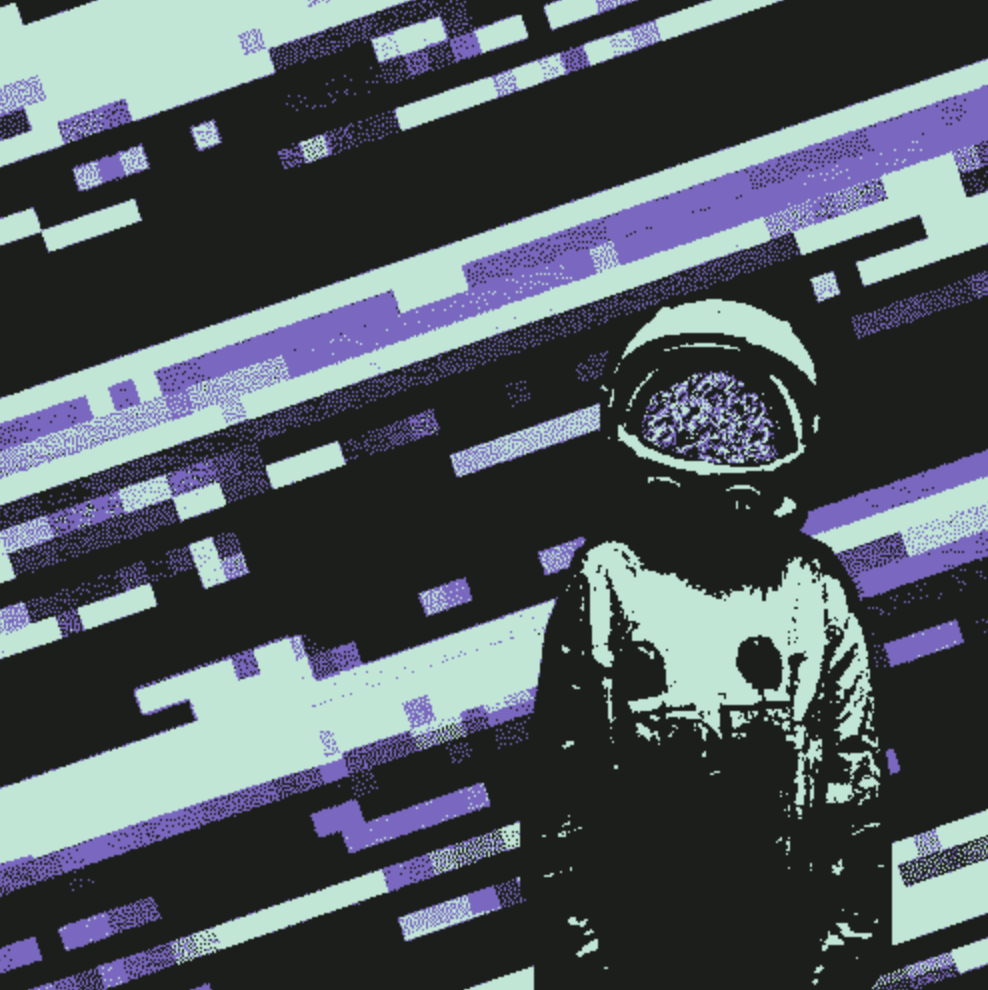
Twitter wasn’t just where crypto art’s culture had coalesced, but the place where, in ROBNESS’ words, “we could promote our work and possibly find collectors.” Twitter was simply the best place to interact with others, have access to larger markets, and get the most eyes on one’s work. Around this time, Tumblr was waning in popularity. Facebook banned crypto companies from advertising on its platforms (including Instagram) in 2018. Twitter, however, was founded by a Bitcoin maxie. It was a social media platform designed not to recreate one’s own social circle, but to expose users to outside information through retweets, quote tweets, and hashtags. It was a safe place for crypto conversation, it was becoming culturally dominant outside of the crypto world, and, if amassing eyes on one’s work was the goal, there was no better locale.
Instagram, a strictly visual medium, might seem like a logical spot for an art movement to coalesce, but as Zucker told me, “While I had focused on Instagram for a while, it too felt like a hollow pursuit, lacking a sense of artistic nourishment.” ROBNESS mirrored that thinking, saying that “[Crypto Art] …might’ve moved to Instagram possibly, I just think the communication for Instagram is really terrible…I just think Twitter is a beast.”
Twitter itself is a unique case study. Ranking only number 15 in monthly users among social media sites according to Statista, it has fewer users than Pinterest! Pinterest. And yet, there’s no denying it’s responsible for an outsized share of cultural importance. Twitter is where political discourse has flocked and where conversations about cancel culture, #Metoo, and sports and cinema have flourished. Twitter brought mega-prominence to former American President Donald Trump and one of the world’s richest people, Elon Musk.
And most importantly, Twitter is where meme culture lives today.
“I think memes, mimetic art is one of the cornerstones of art in the 21st century, period,” ROBNESS said. “Because we literally have the internet which grew from the 90’s and pretty much exploded right at the millennium…So the fact of the transmission of that type of artwork: It’s so quick, immediate, and it gets to the heart.”
Throughout my conversation with ROBNESS, he repeatedly mentioned influential bits of internet culture that were rooted in meme ideology. RarePepe’s, Vaporwave (“Vaporwave is a music genre…it samples 80’s muzak, like cheesy 80s music, they downplay it, they chop and screw it…and if you didn’t get the aesthetics of the art correctly for your album covers, it’s not a real Vaporwave album.”), and, to a large extent, the visual world that XCOPY and Zucker were contributing to on Tumblr.
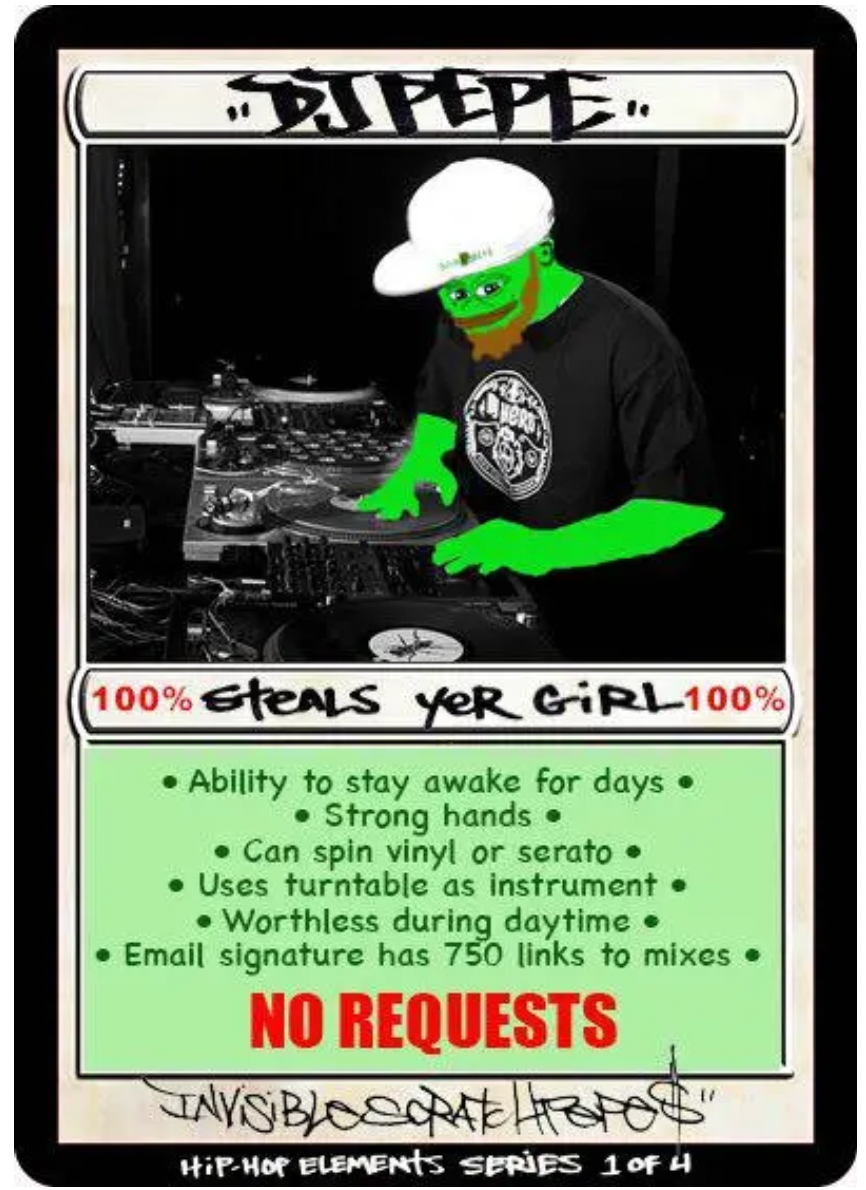
All reflect a culture of hyper-specific referencing, allusions, and visuals, which are then consciously or unconsciously co-opted, remixed, extrapolated, and evolved on and on in perpetuity. Memes are the currency of online interaction. They are the transfer and transportation of a cultural/aesthetic idea backwards and forwards, from here to there, hither and thither, again, and again, and again, too often to understand, too quickly to quantify.
Which more-or-less describes crypto art itself.
In hindsight, it seems silly to think that in our hyper-connected, overwhelmingly-informed, meme-crazy world, we wouldn’t have art that reflects this reality. When culture is being developed not at any central conduit but in the space between the billions and billions of infinitesimal online interactions we engage in every day, then the actual mechanics of how information is spread, by whom, and to where all become undefinable and unimportant. What matters is the totality: Information is being spread, at this incalculable speed, and it’s having this effect.
ROBNESS’ photomoshed, ultra-reactionary art — like his 64 GALLON TOTER which helped kick-start the Trash Art subculture — shares very little aesthetically with, say, Zucker’s rainbow-colored analog style, XCOPY’s doom glitch, or Missalsimpson’s paint-and-impasto-heavy collage. These are unrelated artists making unrelated works in unrelated parts of the world. And yet, crypto art encompasses all of them.
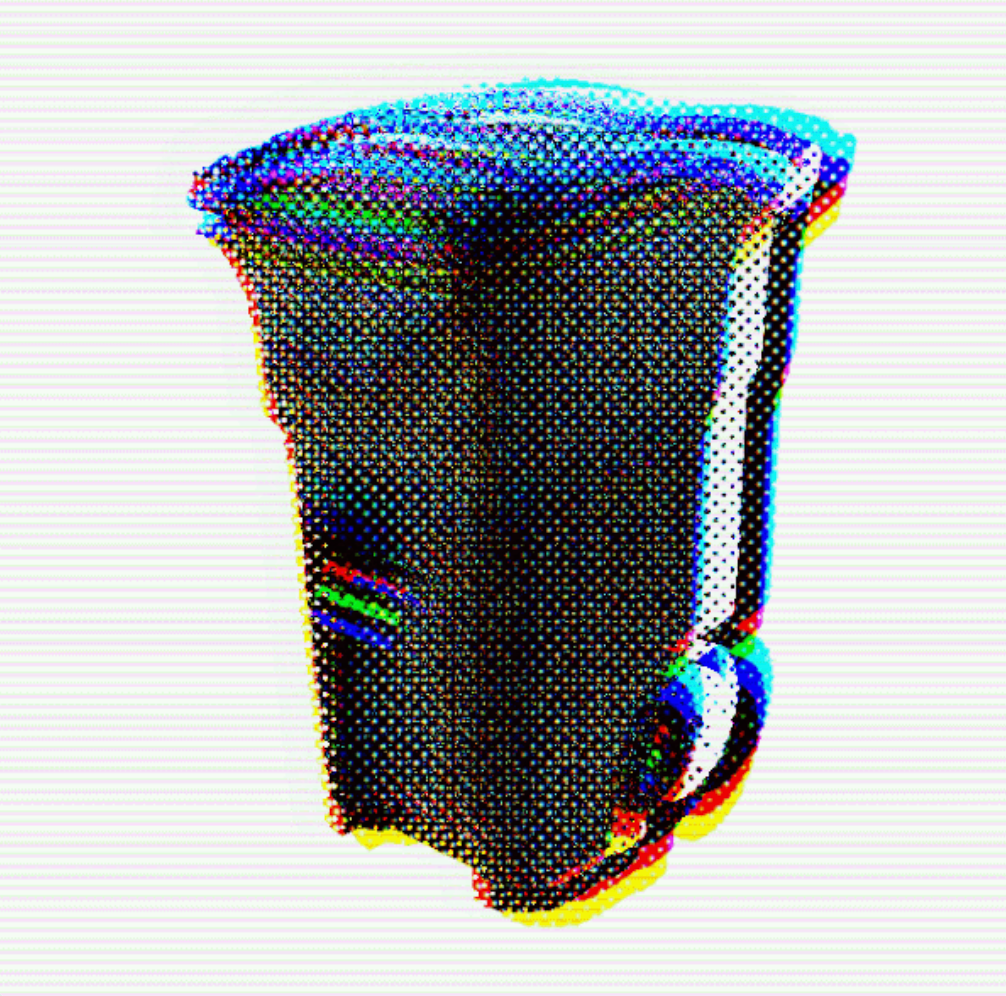
Often, when we talk about Twitter, we assign it various specifying prefixes: Woke Twitter, Basketball Twitter, Disney Twitter, and Black Twitter. But it’s all still Twitter. It’s not just that the thing itself is multifaceted, it’s that being multifaceted is the whole point of the thing.
Crypto art is as twitchy and unregulated as the totality of life itself, displaying the same contradictory, abusrdist logic of a world in which Taco Bell hawks its latest cheddar-laden mega-taco on the same day Putin reigns missiles down upon Ukraine.
Ditto crypto art. And trying to find a single cohesive way to define — or divide — crypto art is missing the point. You can’t define these enormous things, not while being true to their essences. Crypto art is as twitchy and unregulated as the totality of life itself, displaying the same contradictory, absurdist logic of a world in which Taco Bell hawks its latest cheddar-laden mega-taco on the same day Putin reigns missiles down upon Ukraine. The world is absurd. It is too much to look at altogether. That is its essence. And that is exactly what crypto art, thanks to Twitter, is primed to capture.
If art movements have traditionally been responses to X, Y, or Z stimuli, then in a world in which humans are collectively confronting every single stimulus at once, the art must reflect that experience. Twitter is merely the bridge between the world’s actual totality and the art which reflects that totality. Sometimes it’s gruesome, oftentimes inspiring, elsewhere quite dull, but always varied, always metamorphosing, always different than the day before.
That is the gift of crypto art’s glut. And a gift of that caliber requires a platform as gluttonous as Twitter on which to give it. I’m not saying crypto art wouldn’t have developed into itself without Twitter, but at this point does it even matter? Like, yeah, maybe humanity would never have developed without an asteroid to kill the dinosaurs. Or maybe it would have anyway, and we’d all just be walking around with scales.
III. Twitter is only temporary
Make no mistake, we have built our home on shaky ground. Twitter is wonderful in so many ways, but it is a snake, and it is unstable, and now that the two are so deeply intertwined, as the big one goes, so goes the other.

Twitter was always going to affect crypto art in more than just aesthetics. Because Twitter is based on an algorithm that pushes highly-liked and highly-interacted content to the forefront. Thus, positive feedback loops of attention and interest and economics will always, eventually, develop.
Crypto art OG Nino Arteiro told me more or less the same thing. “I think that the way Twitter and social media work makes a minority of artists, collectors, influencers, and platforms dominate the scene and centralize the visibility, power, and money. That’s what we are seeing today: only a few artists and a few PFP projects dominating almost the entire crypto art market.”
Which is kind of a facsimile for how much of art history has traditionally been assembled: Centralized institutions and figures retrofit a larger artistic narrative onto certain figures (usually straight, white men) in certain places (Europe and America). Will the same thing happen here? Will Twitter’s algorithm continue foisting the voices of “prominent” figures upon the masses, solidifying their opinions into notions of deep-seated cultural importance (Validity and sincerity of those opinions be d — ed!)? Will Twitter itself stunt the free flourishing of crypto art it once helped alight?
Will the works of the Argentine artists in Cryptoarg one day be placed in their own specific box separate from the work of, say, Nigerian artists like Osinachi and Adeoye Paul and Ibraheem Sodiq? Will we remember ROBNESS not necessarily because of his artistic ability but because he’s a vocal and active Twitter user? Will crypto art be ripped apart by hindsight hands into easily-digestible chunks, hegemonized by whichever places and people Twitter’s algorithm — or algorithmically-designated tastemakers — have deemed important?
Honestly, I’m not so sure. That part of art history may very well be gone forever. Popularity and fame are so fleeting in the year 2022. Influence even more so. The voices who rule the crypto art conversation today may well have their throne usurped by the end of the year, or the end of the week! Can any person or institution (M○C△ and myself included) reasonably maintain their podium long enough for the next wave of artists/collectors/enthusiasts, and the next and the next, to hear them?
Twitter is a capricious thing by nature, and we see power balances shifting upon it all the time. Coronations and cancellations. Crypto art will continue to mirror Twitter as long as it lives here, for better and for worse.
Still, it’s strange to think that the artistic continuum may forevermore be dependent on which social media apparatus has the day’s favor, or has the day’s best UI. Because all of this — *gestures around* — is temporary. Twitter itself will inevitably fall. And crypto art will move en masse elsewhere. The question is: To where? It might behoove us to start wondering what a Tik Tok art movement looks like. And what does the next social media behemoth do to crypto art?
Who’s to say? But I feel confident saying this: One can’t undo what has already happened. This is the most experienced, savvy, historically-knowledgeable group of artists in the history of the world. And they’re in constant, unfettered communication. This thirst for knowledge won’t diminish. The circles won’t get smaller. The effect won’t dissipate. We’ll all continue to crave more, in every circumstance, and at all times.
I think the better question is this: Can any art movement replicate the world around us better than crypto art does? Potentially, probably yeah. But God, I shudder to imagine what that would look like. It’s already giving me a headache.
IV. Epilogue
The Elders say life wasn’t always like this, all interconnected. And certainly, art history suggests that, once, different people in different parts of the world really could create within their own introspective solitudes. Which makes sense. It was a much more arduous process to physically travel between cities, countries, continents, and it was prohibitively expensive to do so. To see faraway artwork, one often had to, you know, see faraway artwork.
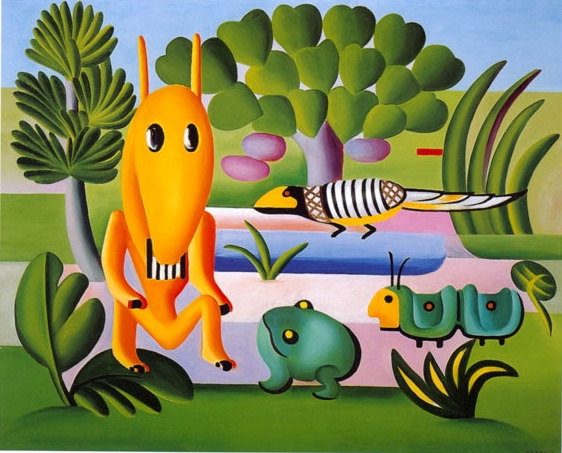
So it was a pretty rare occurrence for an artist to go out and actually observe what the rest of the world was creating. And when we examine art movements in the past, we generally know enough about the people and circumstances therein to understand the exact points at which the influence of the art-world-at-large invaded individual milieus and movements.
Let’s take the art world after World War I, for example. A hotbed of artistic activity. And let’s focus on those art movements which were geographically separated from everything happening in the Western European nucleus. Sorry to all my Francophilic friends.
In Russia, Constructivism: An early 20th-century art movement dominated by the works of Alexander Rodchenko and Vladimir Tatlin. “For the Constructivists, artworks were part of a greater visual program meant to awaken the masses and lead them towards awareness of class divisions, social inequalities, and revolution…They thought that art should reflect the industrial world and that it should be used as a tool in the Communist revolution,” according to Artland Magazine.
In India, the Bengal School, a movement emerging after “Sri Lankan cultural theorist Ananda K. Coomaraswamy wrote a controversial manifesto entitled Art and Swadeshi, voicing support for the revival of an all-Indian culture to counter British imperialism” and which “advocated a mystical modern art immersed in the rich heritage of the ancient Mughal and Rajput artistic traditions,” or so Jessica Lack tells us in her book Global Art (page 11).
In Brazil, Anthropophagia, which grew from poet Oswald de Andrade’s argument that “Brazil’s greatest strength in the past had been in the devouring of its colonial oppressors to achieve autonomy…It was Brazil’s cultural duty to do the same with European culture, in order to create a uniquely Brazilian Modernism.” Fortunately, de Andrade’s wife was the artist Tarsila do Amaral, who helped create an aesthetic style that combined “industrial primitivism — flat cityscapes and buildings — with bold colour an strange anthropomorphic features that suggested a form of Surrealism” (Global Art, 29–31).

These three separate movements on three separate continents each evolved their own hyper-specific style, their own fully unique impulses, their own folk heroes and lore. And yet, we can separate the works of these artists into individual movements with relative ease because we know, for instance, that Tarsila do Amaral, perhaps the greatest of the Anthropophagics, studied in Paris with French modernist Fernand Léger, bringing to Brazil what Christie’s called the “anarchic sensibilities of the Parisian avant-garde.”
And we know that Bengal School superlative Abanindranath Tagore learned “ink wash from Japan, which was introduced to Tagore by the [Japanese] artist Okakura Kakuzö,” an interaction which would affect our entire historical understanding of the Bengal School’s aesthetics (Global Art, 11).
Or how Constructivist Vladimir Tatlin, “was crucially influenced by Pablo Picasso’s cubist constructions (Construction 1914) which he saw in Picasso’s studio in Paris in 1913,” as per the Tate Modern.
Artistry has always been more fluid than it’s given credit for, but almost always in identifiable ways we could catalog, organize, and understand.
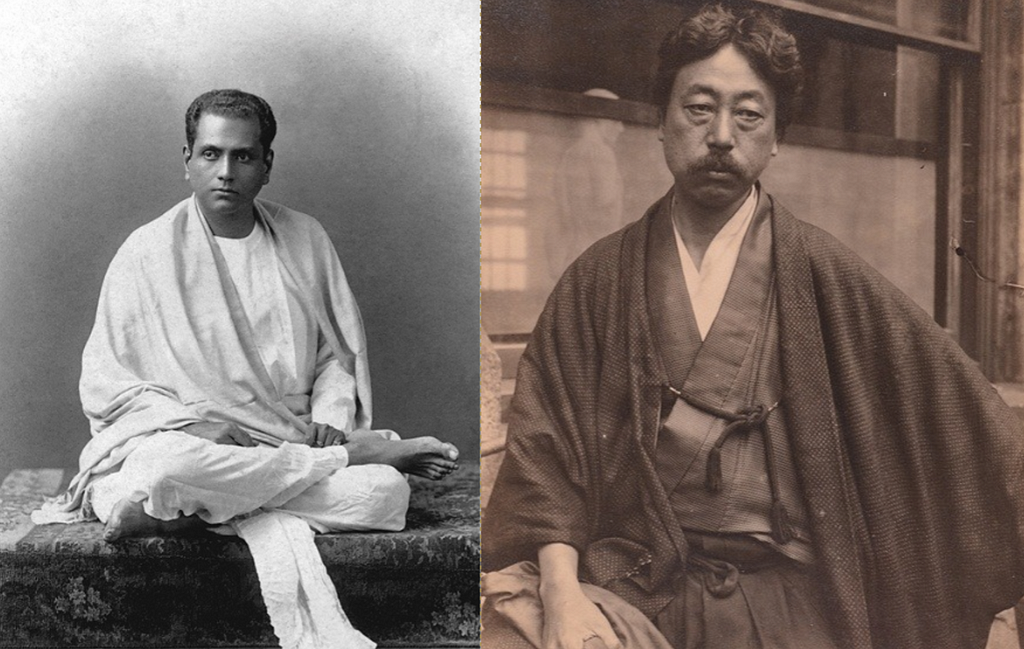
Well, this ain’t 1929. Information overloads us. A million minute interactions between artists occur every moment. Each day is a new education, and thus, “Canon” isn’t so easy to define anymore. The world of art — with crypto art its twitchy, warp-speed avatar — has become a single body. Same blood, same bones, same bile. And it’s impossible to overstate just how transformational that is.